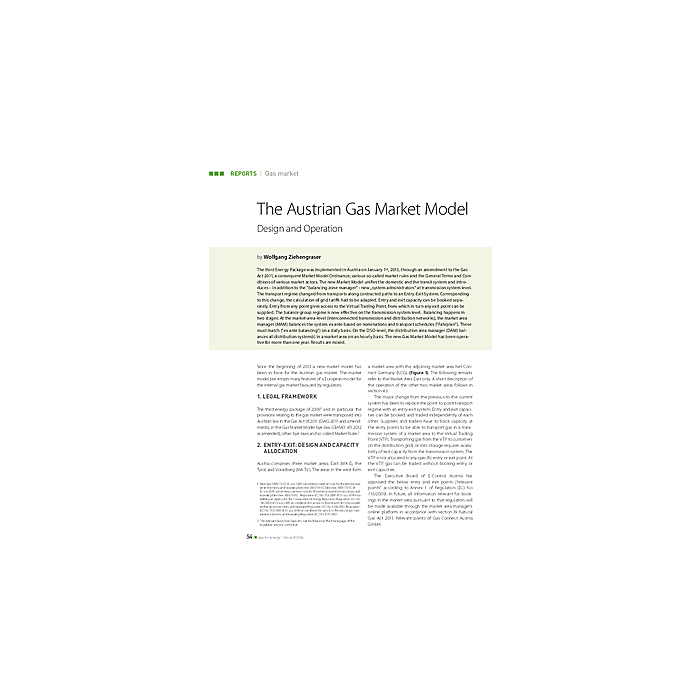The Austrian Gas Market Model
4,90 €
Auf Lager
Artikelnummer
00258_2014_03_06
Design and Operation
The third Energy Package was implemented in Austria on January 1st, 2013, through an amendment to the Gas Act 2011, a consequent Market Model Ordinance, various so-called market rules and the General Terms and Conditions of various market actors. The new Market Model unifies the domestic and the transit system and introduces – in addition to the “balancing zone manager” - new „system administrators“ at transmission system level. The transport regime changed from transports along contracted paths to an Entry-Exit-System. Corresponding to this change, the calculation of grid tariffs had to be adapted. Entry and exit capacity can be booked separately. Entry from any point gives access to the Virtual Trading Point, from which in turn any exit point can be supplied. The balance group regime is now effective on the transmission system level. Balancing happens in two stages: At the market-area-level (interconnected transmission and distribution networks), the market area manager (MAM) balances the system ex ante based on nominations and transport schedules (“Fahrplan”). These must match (“ex ante balancing”) on a daily basis. On the DSO-level, the distribution area manager (DAM) balances all distribution system(s) in a market area on an hourly basis. The new Gas Market Model has been operative for more than one year. Results are mixed.
| Autoren | Wolfgang Ziehengraser |
|---|---|
| Erscheinungsdatum | 01.03.2014 |
| Format | |
| Zeitschrift | gas for energy - Issue 03 2014 |
| Verlag | DIV Deutscher Industrieverlag GmbH |
| Sprache | English |
| Seitenzahl | 6 |
| Titel | The Austrian Gas Market Model |
| Untertitel | Design and Operation |
| Beschreibung | The third Energy Package was implemented in Austria on January 1st, 2013, through an amendment to the Gas Act 2011, a consequent Market Model Ordinance, various so-called market rules and the General Terms and Conditions of various market actors. The new Market Model unifies the domestic and the transit system and introduces – in addition to the “balancing zone manager” - new „system administrators“ at transmission system level. The transport regime changed from transports along contracted paths to an Entry-Exit-System. Corresponding to this change, the calculation of grid tariffs had to be adapted. Entry and exit capacity can be booked separately. Entry from any point gives access to the Virtual Trading Point, from which in turn any exit point can be supplied. The balance group regime is now effective on the transmission system level. Balancing happens in two stages: At the market-area-level (interconnected transmission and distribution networks), the market area manager (MAM) balances the system ex ante based on nominations and transport schedules (“Fahrplan”). These must match (“ex ante balancing”) on a daily basis. On the DSO-level, the distribution area manager (DAM) balances all distribution system(s) in a market area on an hourly basis. The new Gas Market Model has been operative for more than one year. Results are mixed. |
Eigene Bewertung schreiben


